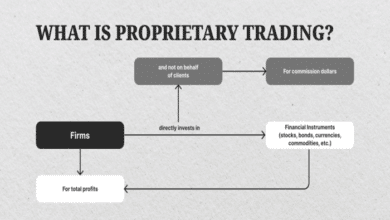What Is a Short Code? Everything You Need to Know About This Powerful SMS Tool

Texting dominates communication these days, and shortcodes turbocharge that game. Picture a snappy, five- or six-digit number businesses blast messages from—way shorter than the usual phone digits. These little powerhouses make SMS a slick tool for marketing, alerts, or quick chats. Wondering what makes shortcodes tick and why they matter? This essay dives deep, unpacking their nuts and bolts, uses, set up, and impact on texting life.
Breaking Down the Basics of Short Codes
So, what’s a short code anyway? It’s a pint-sized phone number—think 54321 or 678901—designed for texting, not calling. Businesses snag them to shoot out bulk messages fast, skipping the clunky ten-digit routine. Two flavors exist: vanity ones, like 12345, for branding swagger, and random ones, cheaper but less flashy. Either way, they’re built for speed and scale. They don’t mess around with regular phone lines, either. Telecom carriers give them VIP treatment, routing texts through special channels. That means messages zip through quicker than a standard text from your buddy. High volume? No sweat. These codes handle thousands of texts without breaking a sweat, perfect for big campaigns or instant updates.
Legality keeps them in check. Carriers and regulators, like the FCC in the U.S., watch them closely. Companies can’t just grab one and spam away—rules demand opt-ins and clear opt-outs. That protects folks from a flood of unwanted pings while keeping the system legit and user-friendly. Behind the scenes, they’re leased, not owned. Businesses rent them from providers tied to mobile networks, paying monthly or yearly fees. Costs vary—vanity codes hit the wallet harder—but the payoff is a streamlined texting machine. It’s a small price for a tool that punches way above its weight.
Why Short Codes Pack a Punch?
Shortcodes shine in marketing. Picture a brand texting “DEAL50” to thousands, offering a discount in seconds. Customers text back, snag the code, and boom—sales spike. It’s instant and direct and beats email’s sluggish open rates. People check texts fast, making this a golden ticket for grabbing attention. Alerts lean on them, too. Think weather warnings, bank fraud pings, or delivery updates—shortcodes deliver news pronto. Governments and companies trust them to cut through the noise when seconds count. No scrolling through apps or digging in spam folders; the message lands right in your hand.
Engagement is another win. Polls, contests, or quick replies turn passive texters into players. A charity might ask, “Text YES to donate $5,” and watch funds roll in. It’s interactive, snappy, and hooks people without dragging them through hoops. That two-way street builds connection, not just chatter. Scalability seals the deal. Small startups or giant corporations—shortcodes flex to fit. They handle a trickle of texts or a tidal wave with no upgrades needed. That reliability keeps operations smooth, whether it’s a local shop or a nationwide chain blasting short code texting campaigns.
Getting Your Hands on a Short Code
Snagging one starts with a goal. Figure out the purpose—marketing blitz, customer service, or emergency alerts. That shapes the type to chase: vanity for pizzazz or random for budget vibes. Providers like Twilio or Sinch hook businesses up, guiding them through options and carrier rules. Approval is the next hurdle. Carriers don’t hand these out like candy—they vet every request. Submit a plan showing how the code gets used, who it targets, and how opt-ins work. It’s a hoops-jumping exercise, taking weeks or months, but it keeps the system clean and spam-free.
Costs come into play here. Leasing fees range from hundreds to thousands yearly, depending on the code’s flair and the provider’s muscle. Add in texting charges based on volume, and it’s a real investment. Smart planning—knowing the audience size and message frequency—keeps the budget from spiraling. Launch time means testing. Send trial texts, tweak the wording, and confirm replies work. Carriers might peek in, too, ensuring compliance. Once greenlit, the code’s live—ready to fire off messages and reel in results. It’s a process, but the payoff is a texting tool dialed in for action.
Conclusion
Shortcodes boil down to a simple idea: fast, effective texting with a big reach. They’re more than digits—they’re a bridge between businesses and people, delivering deals, news, or help in a flash. From their nuts-and-bolts setup to their real-world muscle, they transform SMS into a powerhouse. Master their ins and outs, and they unlock a slick way to communicate, keeping life moving smoothly.




